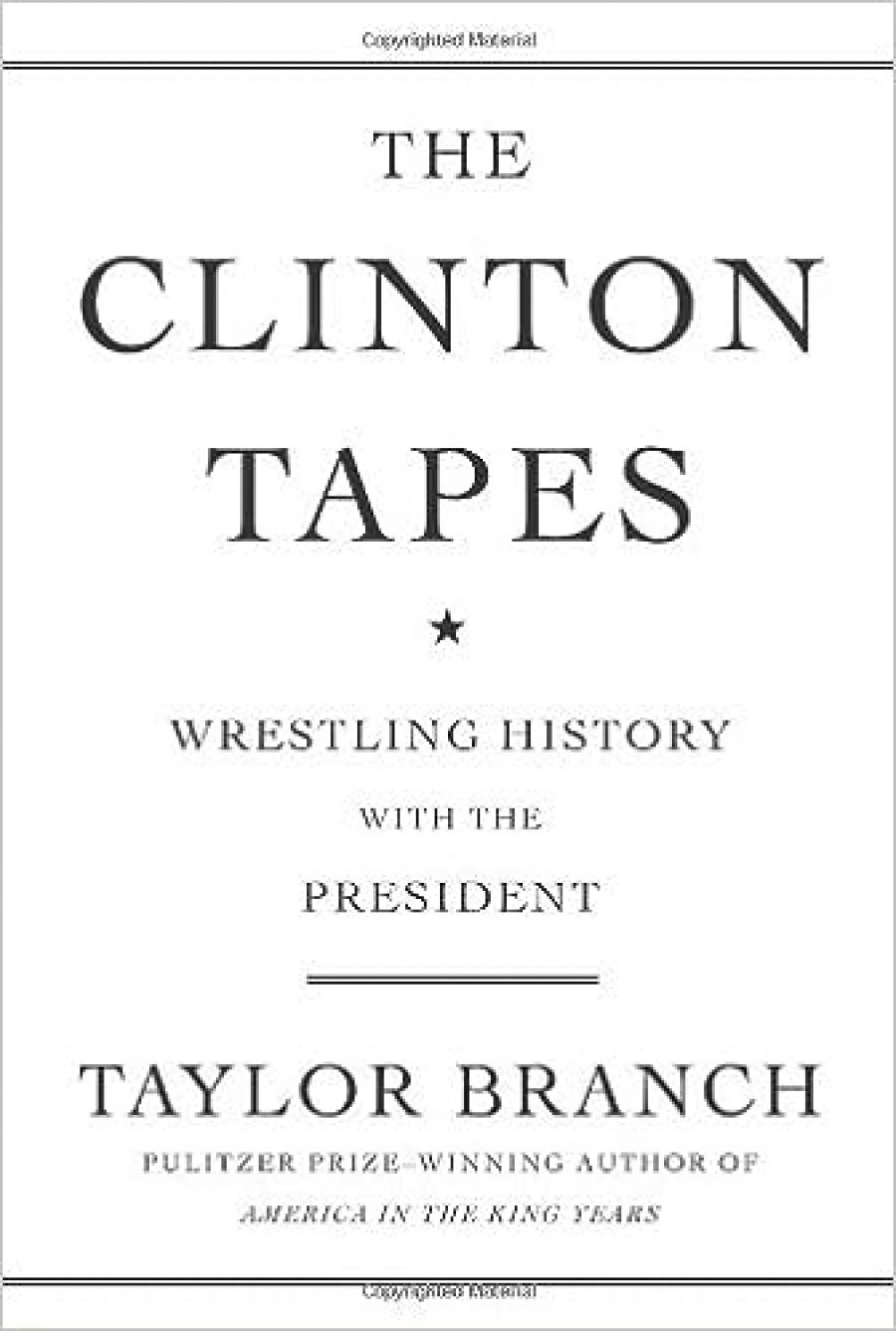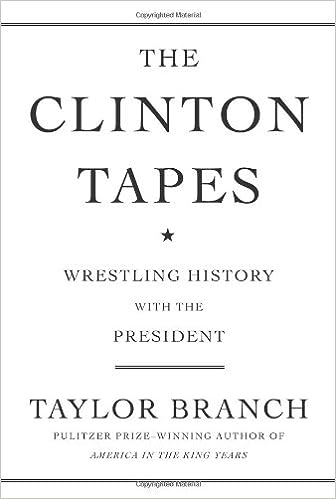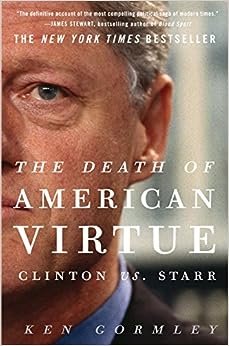
- Free Article: No
- Contents Category: Politics
- Review Article: Yes
- Article Title: The Great Divider
- Article Subtitle: Inside the White House with Bill Clinton
- Online Only: No
- Custom Highlight Text:
While Americans squirmed or vented self-righteous outrage at the revelation of their president’s escapades with Monica Lewinsky, the rest of the world seemed bemused. Oxford history fellow, George Cawkwell, who knew William Jefferson Clinton in his 1960s Rhodes Scholar days, was worldly in defence of his former student: ‘I think the truth is that people behave in sex matters in a way they’d never behave in anything else.’ He counselled English discretion: ‘We don’t attack our monarchs all the time. It wouldn’t have been good for people to have known every bit about Henry the Eighth.’
- Book 1 Title: The Clinton Tapes
- Book 1 Subtitle: Wrestling History with the President
- Book 1 Biblio: Simon & Schuster, $49.99 hb, 707 pp
- Book 1 Cover Small (400 x 600):

- Book 2 Title: The Death of American Virtue
- Book 2 Subtitle: Clinton vs. Starr
- Book 2 Biblio: Crown Publishers (Random House), $59.95 hb, 790 pp
- Book 2 Cover Small (400 x 600):

These two books supply many of the answers to this and other distinctively American puzzles. At the same time, they prompt questions about the sui generis nature of American democracy, about its politicised judicial system, and about the wild horses of fundamentalist and partisan politics that are currently tearing through the very institutions that underpin the freedom that Americans so cherish.
Taylor Branch is, like Bill Clinton, a white Southerner. He made his name with Parting the Waters: America in the King Years, 1954–63 (1988), so is well versed in the conflicting impulses of charismatic men. He and Clinton shared a ‘dusty’ friendship, renewed after a twenty-year lapse when Clinton, upon inauguration, remembered Branch and proposed that this old Southern pal (a writer after all) help him assemble an oral record of his presidency.
It clearly couldn’t be done as LBJ famously did it – by taping all his phone conversations. Such litigation potential! The Nixon experience had made White House lawyers and minders very chary about any record keeping, so Clinton and Branch opted for White House-Counsel approved secret taping sessions, during which Branch would prompt, and the ever voluble, always promptable Clinton would reply. Clinton would retain the tapes. But Branch, as soon as he was smuggled out of the White House and on the road home to Baltimore, dictated as much of the conversations as his trained memory could reconstruct. This book is that remembered record. It is not The Tapes, which are still embargoed (the title is misleading), but rather the story of the making of the tapes, ‘a preview in close witness’. It sits, as Branch himself says, ‘somewhere between politics, journalism and history’. Ethically and professionally fastidious, Branch also insists that he ‘did not try to evaluate Clinton’s version of complex events’. He is, like a latter-day Boswell, ‘a participant in a memoir’. If he lacks Boswell’s zest, we should still be grateful that, in his dealings with an ego as formidable as Boswell’s Johnson, he is just.
The distinctive constraints of Branch’s undertaking in this book are both its strength and shortcoming. One is frustrated by his discretion and by what looks at times like awestruck deference; he clearly finds it almost overwhelming to have such privileged access to the corridors and closed rooms of power. But there is a narrative fidelity, almost an innocence, which makes Branch a telling witness to the tumultuous events, misdemeanours, achievements and rationalisations of Clinton’s presidency.
|
|
That apparent innocence makes The Clinton Tapes an instructive foil to Ken Gormley’s marathon analysis of the ‘investigation that nearly toppled a presidency’: that is, Independent Counsel Kenneth Starr’s examination of Hillary and Bill Clinton’s involvement in Whitewater and of the president’s associated entanglements with Paula Jones and Monica Lewinsky.
Gormley is a law professor and constitutional expert at Duquesne University in Pittsburgh, and author of Archibald Cox: Conscience of a Nation (1997). Archibald Cox was the special prosecutor whose Watergate investigation made him, rightly, an American hero, and it is Cox (in person via interviews and indirectly by heft of reputation) who figures in Gormley’s account of the Starr Inquiry as the gold standard of legal independence, integrity, professional objectivity and public service.
Where Taylor Branch listens and records, Ken Gormley gets about (hundreds of trips to Washington, for example), frankly evaluates, and incorporates into his forensic account of Starr’s investigation of the Clintons the evaluations of others: hundreds of observers, participants, experts, family, friends and enemies of the Clintons and of Starr. No shortage of picaresque characters here – the book bristles with them. It took nine years to research and to write. It is 790 pages long and has seventy-one pages of notes. The subtitle, Clinton vs. Starr, accurately captures the narrative focus: it is an exhaustive study of what Clinton said and did, and how and why Starr pursued his investigation of Clinton in the way he did. Clinton and Starr both gave Gormley hours of time, and their divergent voices, and those of other players, add greatly to the book’s liveliness and authenticity. The firsthand source material also makes for scrupulously balanced portraits of the two protagonists, both prodigiously gifted men, and complex in ways that mirror the America of these past two decades – impassioned, polarised, unforgiving, aspirational and exceptional – in ambition, achievement and in failure.
It helps, greatly, that Gormley is legally au fait and adept at navigating through the wastelands and active volcanos of this legal and political saga. He can explain the bewildering divisions and subdivisions of political and legal jurisdictions; he is familiar with the predispositions and foibles of judges, lawmakers, counsels, congressmen, senators and prosecutors. He is disarmingly pleased when they confound his prejudices, and unsanctimonious when they confirm them. That light touch makes his revelations about the distorted, politicised landscape of legal America all the more shocking to an outsider: judges, at all levels up to and including the Supreme Court, deciding crucial matters on party lines; justices who are segregationists, almost half a century after Rosa Parks; prosecutors who behave like unleashed pit bulls; lawyers whose arrogance outstrips their competence; and a system that evinces scant regard for the rights of individuals or even the Secret Service conventions that protect the president of the United States, particularly from assassination.
Gormley’s interviews with Lew Merletti, nineteenth director of the United States Secret Service (USSS), who served under Presidents Reagan, Bush and Clinton, are astonishing in what they reveal. Starr’s office, in its unrelenting pursuit of Clinton, subpoenaed USSS officers to testify about what they had seen and heard while guarding the president. Not even the protests of President George H.W. Bush, who understood how crucial was mutual trust between ‘POTUS’ and his guards, could persuade the Independent Counsel that such testimony was dangerous because it could sabotage the security system that protects US presidents.
Every chapter of Branch’s record of Clinton’s time and travels as president (Bosnia, Korea, Europe, the Middle East, etc.) gives one a clear sense of the mortal dangers that consort with the office of president. His chapters also supply the parallel story to the one that Gormley tells: while Whitewater raged and Clinton finally had to tell a version of the truth about his relations with ‘that woman’, there was still Kosovo, or Arafat’s intransigence to worry about, still a State of the Union Address to be delivered. Firsthand testimony gives us some sense of Clinton’s chutzpah in a crisis: Clinton ‘never understood all the hype. This speech was not so hard to deliver. Perhaps the uproar made him tighten its structure a bit, which was good, but he wanted to show that he was tending the people’s business at a critical moment in history.’ The nerve and the resilience of the man are phenomenal, and Taylor Branch catches it. He also catches Clinton’s prophetic assessment of George W. Bush. If only America could have seen as clearly as its supremely savvy, disgraced president could see.
Gormley, orchestrating his great choir of voices, and two soloists in particular, lets us hear all the resonance of this fraught decade in American history. Like a good novelist, he doesn’t pretend to fully understand or explain what made Clinton and Starr so similar yet so different, so well intentioned yet so destructive. But he does give his readers evidence in abundance as a spur to further reading. And, God bless him, he gives Monica Lewinsky enough air to right some of the many wrongs that were done to a young woman caught in the crossfire of brutal politics.
Read them together. Both books require serious commitment, but better that than the quotidian banality of Australia’s parliamentary mud-wrestling. In their very American way, both explain why Barack Obama has inherited a United States that is not united and is close to ungovernable. But they also suggest why Obama, mindful of precedent as the good lawyer that he is, clings to the ideal of American virtue, and will not falter in his determination to fulfil the promise of the republic that has given him, as it gave Bill Clinton and Kenneth Starr, the grail of opportunity.


Comments powered by CComment